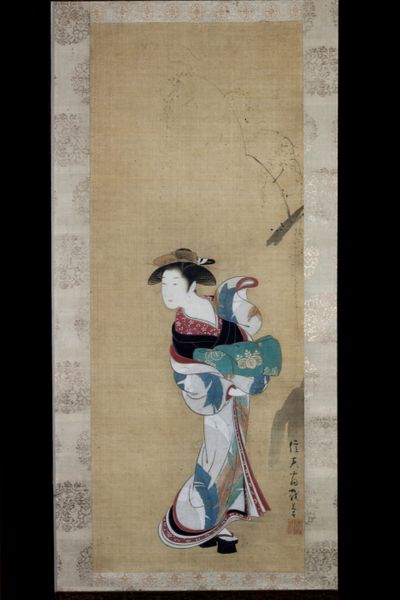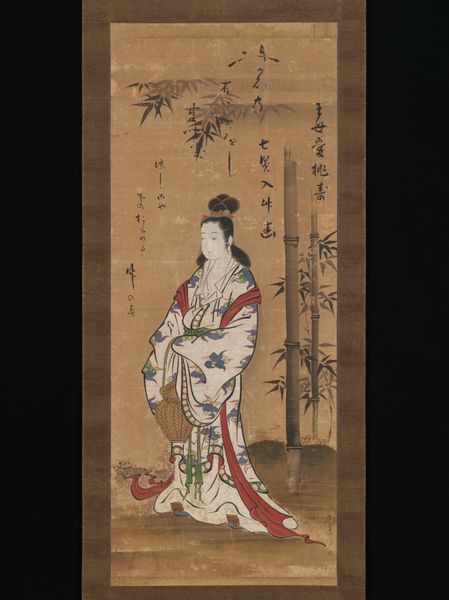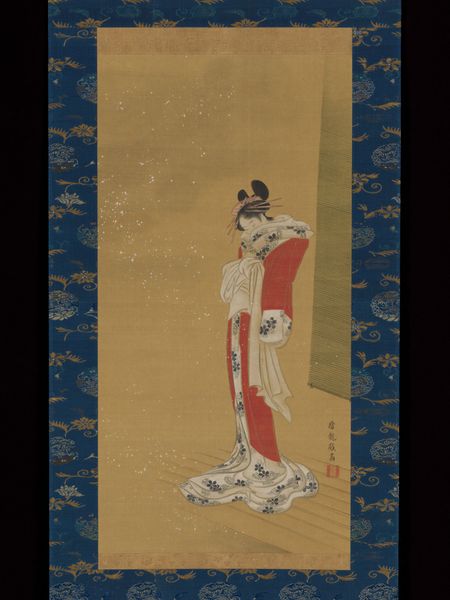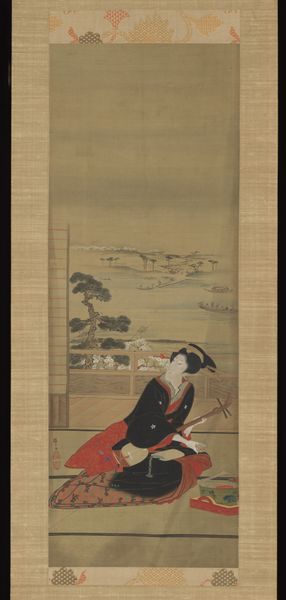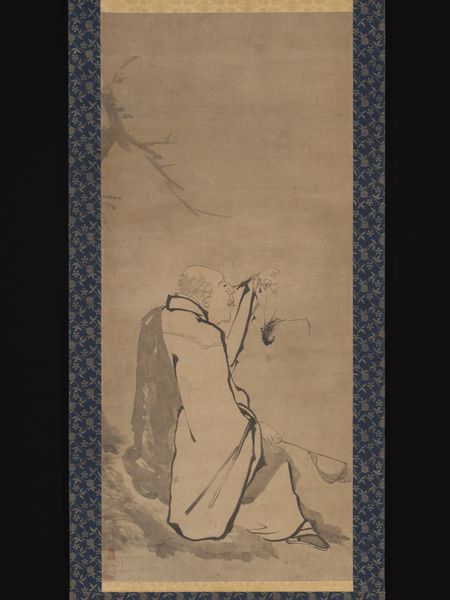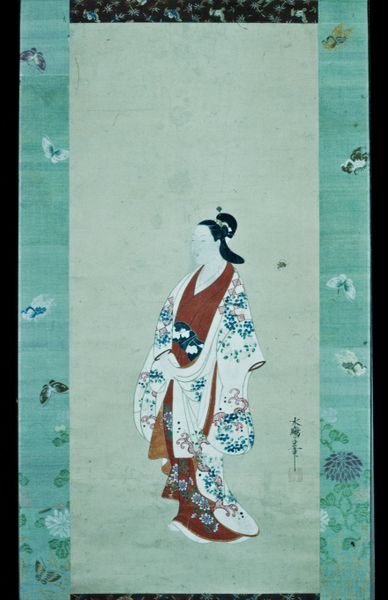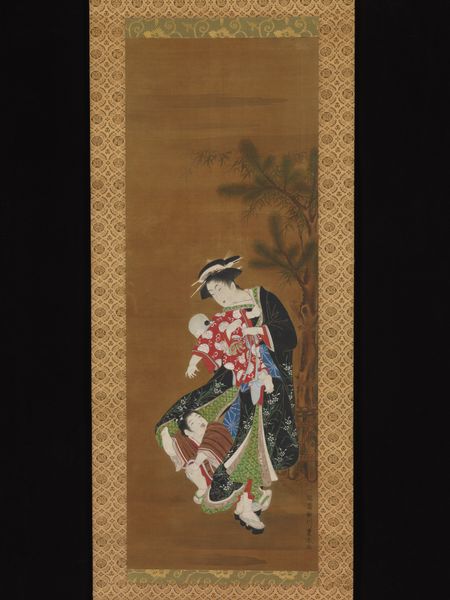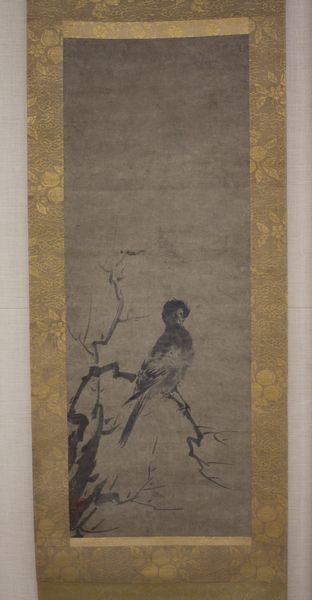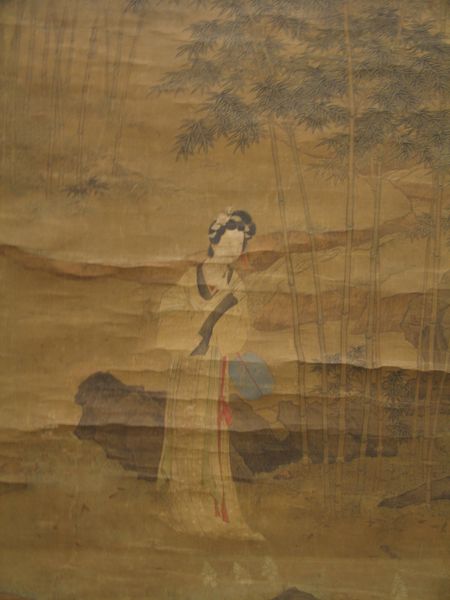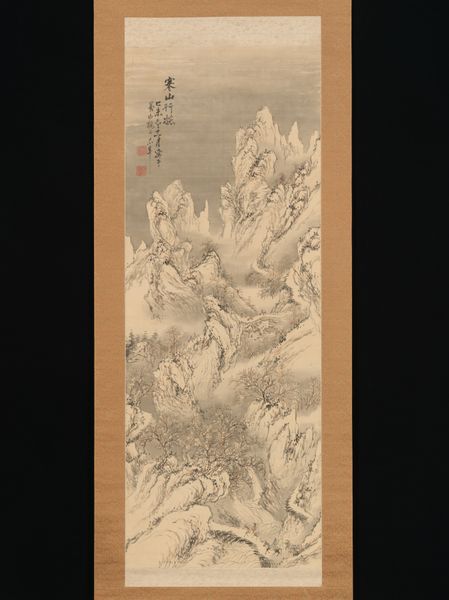
Prostitute Reading a Poem-Card c. 1735
0:00
0:00
drawing, print, ink
#
portrait
#
drawing
# print
#
asian-art
#
ukiyo-e
#
ink
#
genre-painting
Dimensions: 36 5/8 x 14 3/16 in. (93 x 36 cm) (image)69 7/8 x 19 11/16 in. (177.5 x 50 cm) (mount) W 55.5 cm w/roller
Copyright: Public Domain
Editor: Nishikawa Sukenobu’s *Prostitute Reading a Poem-Card*, created around 1735, depicts a woman standing beneath a blossoming tree. She’s holding up what appears to be a poem card. There’s a contemplative feel to the image. What do you see in this piece? Curator: This print offers a window into the Edo period, a time of formalized pleasure quarters and a vibrant floating world culture. Notice how the cherry blossoms, symbols of transience, mirror the fleeting nature of life within the pleasure districts. The poem card, held aloft, suggests a connection to a deeper, perhaps unattainable beauty or love. Do you think that's a sad commentary on her situation? Editor: It does feel poignant. I guess I hadn't considered the specific symbolism. I just thought she was appreciating the poem! Curator: Exactly! The beauty of ukiyo-e lies in its layered meanings. This image speaks to both the appreciation of art and the undercurrents of social commentary present even within depictions of beauty and pleasure. There's almost a performance of artistry happening within this captured moment of daily life. The symbols are signifiers of her role. Editor: That's really fascinating! So it’s about more than just a beautiful woman enjoying a poem. The symbols tell a story about her place in society. Curator: Precisely. It reminds us that even seemingly simple images can hold complex cultural narratives, particularly within a structured social framework. How visual codes signify social standing intrigues me. Editor: This makes me want to look at Ukiyo-e prints with much more careful attention to details and cultural context now! Curator: That’s wonderful to hear. Art becomes infinitely richer when we explore its layered meanings.
Comments
minneapolisinstituteofart almost 2 years ago
⋮
While images of the beautiful women and Kabuki actors of Japan's "floating world" first became popular in the eastern capital of Edo, artists in the historic capital of Kyoto soon followed their lead. Nishikawa Sukenobu designed illustrations for a large number of picture books featuring elegantly clad, sweet-faced women. Although he did not design any single-sheet prints, he was renowned in his lifetime for his meticulously rendered and elegant paintings. Here, Sukenobu depicts a fashionable young woman wearing a loose outer robe (uchikake) with a pattern of willow trees, over a red crepe kimono. She pauses to read a poem card (tanzaku) that has been attached to the branch of a flowering cherry tree.
Join the conversation
Join millions of artists and users on Artera today and experience the ultimate creative platform.
